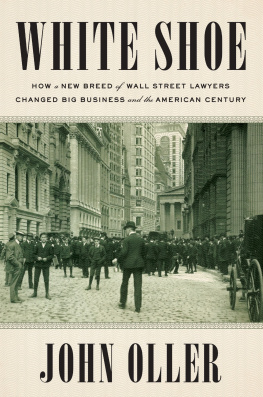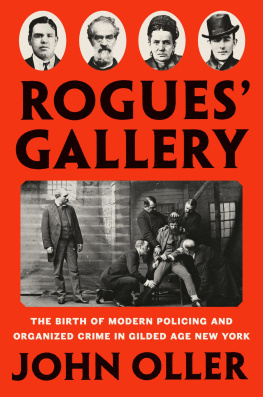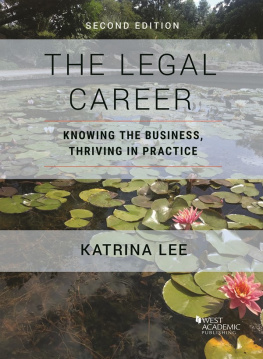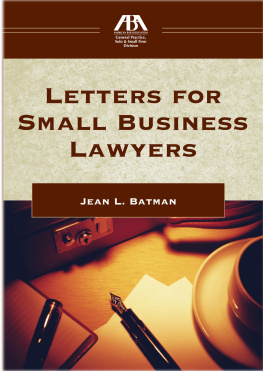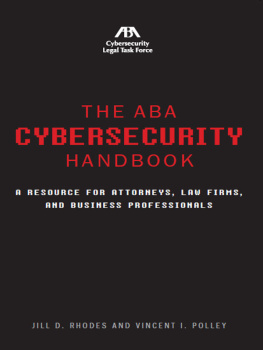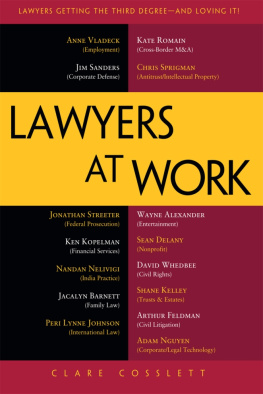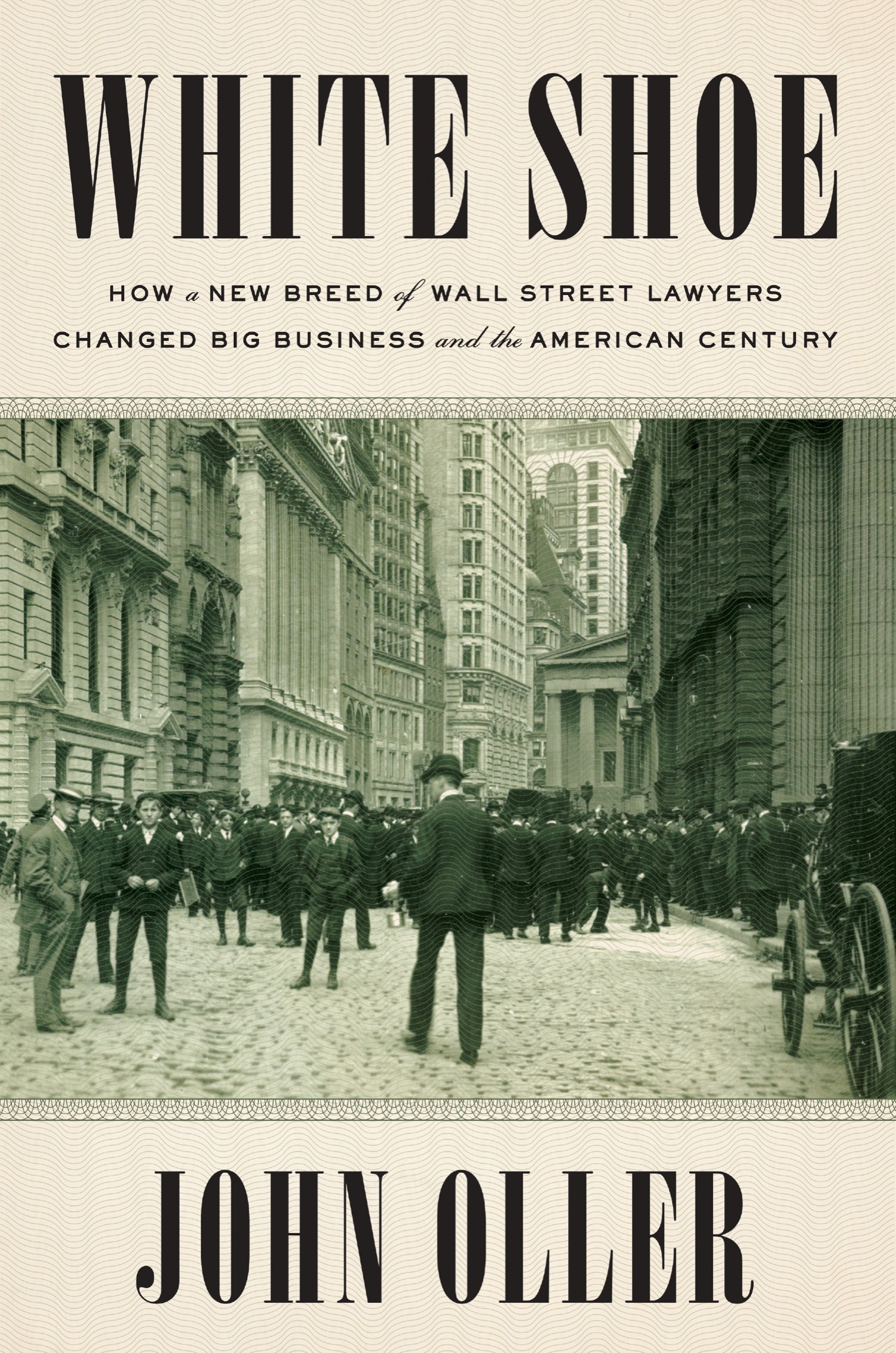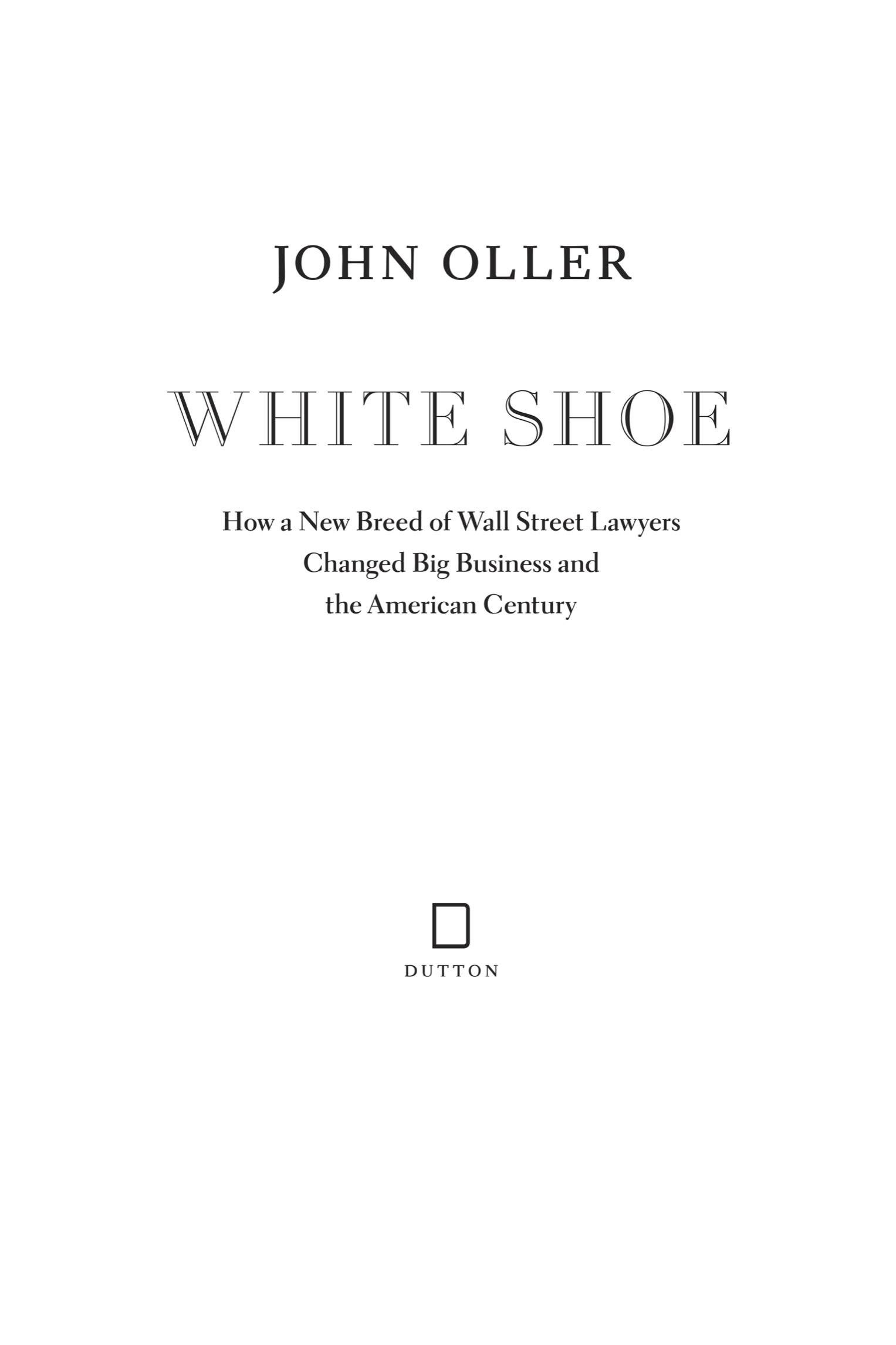ALSO BY JOHN OLLER
The Swamp Fox: How Francis Marion Saved the American Revolution
American Queen: The Rise and Fall of Kate Chase SpragueCivil War Belle of the North and Gilded Age Woman of Scandal
An All-American Murder
One Firm: A Short History of Willkie Farr & Gallagher LLP, 1888
Jean Arthur: The Actress Nobody Knew

An imprint of Penguin Random House LLC
penguinrandomhouse.com

Copyright 2019 by John Oller
Penguin supports copyright. Copyright fuels creativity, encourages diverse voices, promotes free speech, and creates a vibrant culture. Thank you for buying an authorized edition of this book and for complying with copyright laws by not reproducing, scanning, or distributing any part of it in any form without permission. You are supporting writers and allowing Penguin to continue to publish books for every reader.
DUTTON and the D colophon are registered trademarks of Penguin Random House LLC.
LIBRARY OF CONGRESS CATALOGING - IN-PUBLICATION DATA
Names: Oller, John, author.
Title: White shoe: how a new breed of Wall Street lawyers changed big business and the American century / John Oller.
Description: New York, New York: Dutton, an imprint of Penguin Random House LLC, [2019] | Includes bibliographical references and index.
Identifiers: LCCN 2018029007 (print) | LCCN 2018032298 (ebook) | ISBN 9781524743277 (ebook) | ISBN 9781524743253 (hc)
Subjects: LCSH: Corporate lawyersUnited StatesHistory. | Corporation lawUnited StatesHistory. | Commercial lawUnited StatesHistory. | Wall Street (New York, N.Y.) | Cravath, Paul D. (Paul Drennan), 18611940.
Classification: LCC KF299.I5 (ebook) | LCC KF299.I5 O45 2019 (print) | DDC 346.73/066dc23
LC record available at https://lccn.loc.gov/2018029007
While the author has made every effort to provide accurate telephone numbers, Internet addresses, and other contact information at the time of publication, neither the publisher nor the author assumes any responsibility for errors or for changes that occur after publication. Further, the publisher does not have any control over and does not assume any responsibility for author or third-party websites or their content.
Version_1
Again, to my family
CONTENTS
Prologue
New High Priests for a New Century
In 1899, when Paul Cravath became a partner in the prestigious Wall Street law firm cofounded by William H. Seward, Abraham Lincolns secretary of state, the century wasnt the only thing about to change. The standard paper clip had just been invented, and rubber bands had recently come into common use. Although that was progress in office supplies, the Seward firm, like many others, was stuck in old ways: There was no filing system, and the index was kept in an office boys head.
For all their supposed smarts, lawyers have often lagged in adapting to technological change. After the first elevator was installed in the Seward firm in 1885, head partner Clarence Seward refused to use it. If he didnt feel like climbing the two flights of stairs to his office, he just stayed home.
When the first telephones came to New York City in 1878, lawyers considered it unprofessional to use them for business calls. Many doubted their privacy, perhaps because there was a single central exchange called Law for all lawyers in the boroughs. As late as 1911, recalled John Foster Dulles, who joined the prestigious Sullivan & Cromwell firm that year, some of the older partners felt that the only dignified way of communication between members of the legal profession was for them to write each other in Spencerian script, and to have the message thus expressed delivered by hand.
Lawyers were also slow to accept the typewriter, commercialized in the 1870s. Until the mid-1880s, documents were drawn up in longhand by men who stood or sat on tall stools at high slanting desks. The best penman would write page after page and pass them down the line to scriveners, who laboriously copied them at long tables.
Stenographers who could take dictation were not used, because they were seen as intrusive. Letters circulated in their original form and were accompanied by earnest requests to return them as soon as possible. Only when the demands of the expanding legal profession finally became too much to handle in the old manner, around the turn of the century, did firms begin hiring female stenographers, secretaries, and typists to replace male copyists.
Paul Cravath, then thirty-seven and the Seward firms newest partner, saw a need for change. The first thing he did upon joining the firm was to begin a filing system, hiring a female librarian from Columbia University to run it. But it was really the entire law office system he wanted to revamp. He realized that in the twentieth century, law firms had to become more like their most successful corporate clients: organized, efficient, and capable of expanding.
For most of the nineteenth century, the typical law office was a solo practice or a two-man partnership with a few loosely affiliated clerks. Partners shared office space and expenses but not each others legal fees. Young men worked as clerks without pay for a few years, performing secretarial duties in exchange for a desk and access to the partners library. Essentially free agents, they made their living by seeking out cases and clients of their own. Often they had not attended law school or taken any written bar examination before they were admitted to practice.
Law clerks received no systematic education or training at the firm; instead, their learning came from reading law books, copying papers, and observing the partners at work. Frequently the clerks were relatives or friends of the partners or the firms clients and no one expected them to contribute materially to the actual legal work of the firm.
But to Cravath, the whole arrangement lacked discipline. It was tainted by nepotism, created divided loyalties, and produced mediocrity, not excellence. He decided there had to be a better way. He would hire the best law students, carefully train them, pay them to secure their allegiance, work them to the bone, promote them to partnership if they proved themselves, and send them on their way if they did not. As partners they would collaborate and share profits. It would become known as the Cravath systema set of business management principles still in use today by law firms and consulting companies.

The system was perfectly geared to the type of lawyer Cravath had become. By the turn of the century he was one of the growing cadre of corporation or office lawyers who helped create the foundations of modern American business. Working hand in glove with their corporate clients, visionary lawyers such as Cravath were devising and implementing legal strategies that would drive the business world throughout the twentieth century. They headed what became known as white shoe firms, named for the white buck shoes worn by generations of Ivy League college men who, as members of the WASP elite, went on to run the leading law, banking, and accounting firms on Wall Street.

